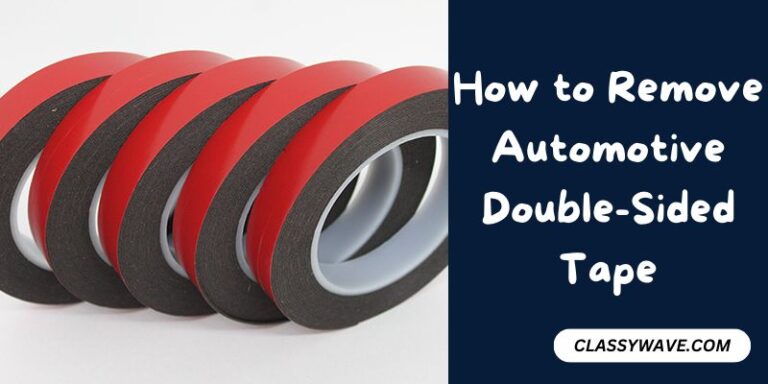How Thick is Automotive Sheet Metal – A Comprehensive Guide
In the fast-paced world of automotive engineering, every detail matters, and one critical aspect that often goes unnoticed is the thickness of automotive sheet metal. This seemingly mundane factor plays a pivotal role in the performance, safety, and overall design of vehicles.
Introduction
Automotive sheet metal is the unsung hero of vehicle construction, providing the structure and form that define the cars we drive. The thickness of this sheet metal is not arbitrary; it’s a carefully calculated parameter that engineers tweak to achieve optimal results. In this article, we’ll delve into the intricacies of automotive sheet metal thickness, exploring its significance, industry standards, and the impact it has on various aspects of vehicle design.
Basics of Automotive Sheet Metal
Before we delve into thickness, let’s understand what automotive sheet metal is and why it’s indispensable in the automotive industry. Sheet metal refers to metal that has been formed into thin, flat pieces, making it ideal for shaping the outer bodies of vehicles. It provides the necessary rigidity and structure while allowing for intricate designs.
Standard Thickness for Automotive Sheet Metal
Automotive sheet metal comes in a range of thicknesses, and the choice depends on various factors such as the vehicle’s intended use, design requirements, and manufacturing processes. Typically, the thickness can vary from 0.6 mm to 1.5 mm, with different parts of the vehicle requiring different thicknesses. Striking the right balance is crucial for achieving the desired structural integrity and safety standards.
Impact of Thickness on Vehicle Performance
The thickness of automotive sheet metal directly influences the weight of the vehicle. Thicker sheets add to the overall weight, affecting fuel efficiency and handling. However, it’s a delicate dance, as thicker metal also enhances structural integrity, contributing to the vehicle’s safety.
Safety Considerations
In the world of automotive engineering, safety is paramount. Thicker sheet metal provides an added layer of protection, especially in the event of a collision. Regulatory bodies set standards for minimum thickness, ensuring that vehicles meet certain safety criteria.
Advances in Automotive Sheet Metal Technology
Advancements in technology have led to innovations in sheet metal manufacturing. Engineers now have access to materials and processes that allow for thinner yet stronger sheets. This not only contributes to weight reduction but also opens up new possibilities in vehicle design.
Lightweighting Trends
In recent years, there’s been a noticeable shift toward lightweighting in the automotive industry. Manufacturers are exploring materials that offer the same strength as traditional sheet metal but with reduced weight. This trend aligns with the global push for fuel efficiency and reduced emissions.
Challenges in Choosing the Right Thickness
Selecting the appropriate sheet metal thickness is not without challenges. Engineers must consider a myriad of factors, including safety, weight, and cost. Striking the right balance requires a nuanced approach to ensure that vehicles meet safety standards without compromising on performance.
Sheet Metal Thickness in Different Parts of a Vehicle
Different parts of a vehicle have distinct requirements when it comes to sheet metal thickness. Body panels, for example, may require thinner sheets for aesthetics and weight considerations, while the chassis demands thicker sheets for structural strength.
Corrosion Resistance
Thickness also plays a crucial role in preventing corrosion, a common concern in the automotive industry. Thicker sheets, coupled with the right materials and coatings, enhance a vehicle’s resistance to rust and other forms of corrosion.
Future Prospects in Sheet Metal Thickness
As technology continues to advance, the future of automotive sheet metal thickness looks promising. New materials, manufacturing techniques, and design philosophies will likely reshape the way engineers approach sheet metal, leading to even more efficient and safer vehicles.
Real-world Examples
To illustrate the significance of sheet metal thickness, let’s examine some real-world examples. [Insert examples of specific vehicles and their sheet metal specifications, highlighting their impact on performance and safety.]
Expert Opinions
Industry experts weigh in on the importance of sheet metal thickness. While opinions may vary, the consensus is that finding the right balance between thickness, weight, and safety is crucial for the continued evolution of the automotive industry.
Tips for Consumers
For consumers navigating the complex world of vehicle specifications, understanding sheet metal thickness can be daunting. However, armed with knowledge, consumers can make informed decisions about the safety and performance of the vehicles they choose.
Conclusion
In conclusion, the thickness of automotive sheet metal is a critical factor that influences various aspects of vehicle design. Striking the right balance between thickness, weight, and safety is a continuous challenge for engineers. As technology evolves, we can expect further innovations that will shape the future of automotive sheet metal.
FAQs
Is thicker sheet metal always better for vehicle safety?
Thicker sheet metal contributes to safety, but it’s essential to consider other factors in the overall design.
How do manufacturers determine the optimal thickness for different vehicle parts?
Engineers conduct thorough analyses considering structural requirements, weight, and safety standards.
Are there industry standards for automotive sheet metal thickness?
Yes, regulatory bodies set standards to ensure vehicles meet minimum safety criteria.
Can thinner sheets be as strong as thicker ones?
Advancements in materials and manufacturing processes allow for thinner sheets with enhanced strength.
How does sheet metal thickness impact fuel efficiency?
Thicker sheets add weight, affecting fuel efficiency, but advancements in lightweight materials counterbalance this.



